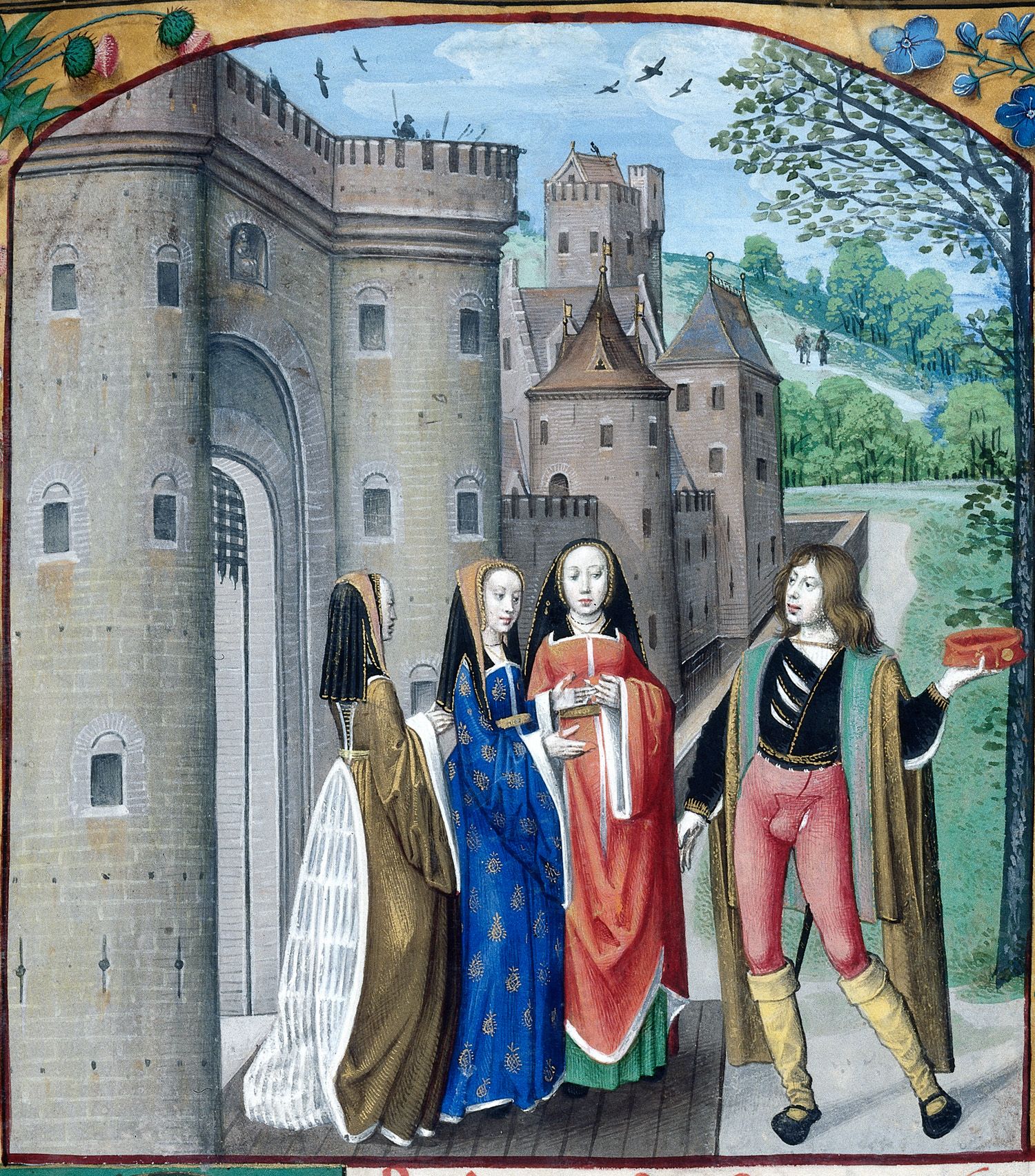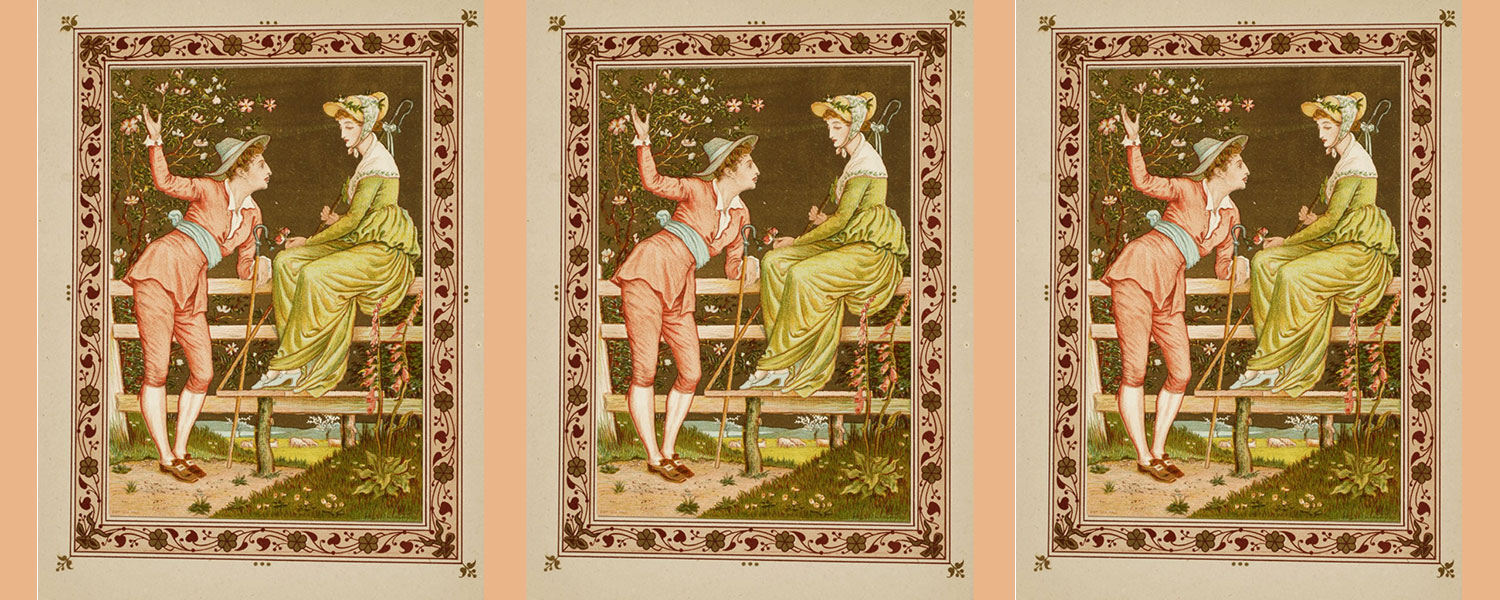Valentine’s Day – When Cupid’s bow is fired…
As far back as the early fourth century B.C., the Romans had celebrated an annual rite of passage for young men in honor of the god Lupercus. The names of willing young women were placed in a box and drawn at random by the young men. From this lottery each man was matched with a woman companion to share in mutual entertainment and pleasure (often sexual). In a year’s time a new lottery was drawn with new partners.
Needless to say the early Catholic Church fathers were determined to put an end to this practice. They decided to find a « lover’s » saint who could usurp the popularity of Lupercus. They found Valentine.
In Rome in A.D. 270, Valentine, Bishop of Interamna, had performed the sacrament of matrimony for lovers in secret. Valentine was violating a law issued by the mad emperor Claudius II who believed that married men made poor soldiers because they were loath to leave their families for battle. Since the Empire needed soldiers, Claudius II simply abolished marriage.
Valentine was sent to Claudius when his crime was discovered. History claims that Valentine refused the renounce Christianity for the Roman gods ; so he was sentenced to death. While in prison, he fell in love with the blind daughter of the jailer. During this time Valentine’s unswerving faith had miracuously restored his true love’s sight. Before his execution, he sent his beloved a beautiful, passionate farewell letter which he signed « From your Valentine, » a phrase that lives on today. Believed to have been executed February 14, 270, Valentine was clubbed, stoned, then beheaded for being a « friend of lovers » and a martyr for Jesus Christ.
In A.D. 496, Pope Gelasius outlawed the Lupercian lottery of choosing prospective mates, under penalty of mortal sin. But cleverly the Pope decided to retain the lottery to appease the Roman spirit of chance, but the incentive for his lottery was completely different. The names of saints were placed in the lottery box instead of women’s names. Both men and women drew the name of a saint, and in the ensuing year were expected to emulate the life of the saint whose name they had drawn. The spiritual overseer of this annual mid-February lottery was of course the martyred lover Valentine thus he is the Patron Saint of affianced couples, bee keepers, engaged couples, epilepsy, fainting, greetings, happy marriages, love, lovers, plague, travellers, young people. He is represented in pictures with birds and roses.

Detail of a miniature of the Castle of Love, with the lover addressing three women. Image taken from f. 188 of Poems; Art d’amour; Les demands d’amour; Le liver dot grace entire sure le fait du government d’un prince. Public Domain.
In Ancient Rome, mid-February was a time for courtship. On February 14, Roman men would pen love letters and offer them to women they admired. These became known as Saint Valentine’s letters, in honor of the « lovers’ » saint. With the rise of Christianity, the Valentine card flourished. The oldest existing valentine dates back to 1415, and is on display at the British Museum. It was written by Charles, Duke of Orleans (then a prisoner at the Tower of London) to his wife.
The sixteenth century saw Valentine cards proliferate and become more elaborate. Straight out of Roman mythology, Cupid (son of Venus, the goddess of love and beauty), with his potent love arrows, became a popular image for the cards.

Public Domain Vintage Postcard: Valentine’s Day Card, from the Early 1900s.
Commercialization of the Valentine card seems to have come about in the 17th century. Though many lovers opted to make their own cards, oversized and full of fancy ornament, by now valentines were also available in stores. To help out the uninspired, a book called « The Young Man’s Valentine Writer » was published in England in 1797. Pre-printed cards containing verses and sketches appeared and postal rates dropped, which resulted in the valentine becoming a little less personal, but all the more popular. The practice of mailing valentines also allowed for the enticing possibility of sending the cards anonymously. This led to a sudden rise in sexually explicit verse, which shocked many and resulted in the banning of Valentine cards in several countries. In the late 19th century, the Chicago post office refused to deliver some 25.000 cards because of their illicit content.
The artist Esther Howland was the first American publisher of Valentine cards. In the 1870s, she made fancy lace cards which could cost as much as $35. The popularity of Valentine cards has not diminished since then: Americans send more cards for Valentine’s day than any other occasion, with the exception of Christmas.
Want to learn more about the history of cards and post card in general? Enjoy our article about the power of postcards.
Valentine’s Day also has a dark side. Here are some horror and ghost stories that have been linked to valentines and lovers.
Valentine’s Day in France, like elsewhere, often is marked by flowers. Here’s the meanings of some types of flowers in France.
- Le crocus: Pour les amours naissants
- Le bleuet: Pour déclarer un amour platonique ou exprimer la timidité
- La marguerite: égale la simplicité
- L’amaryllis: La fleur préférée des amoureux
- Le lilas: Suggère qu’il est doux d’aimer
- L’iris: Exprime la tendresse
- Le bouton d’or: Celui qui vous l’offre est votre âme sœur
- La primevère: Représente les premiers émois du cœur
- Le narcisse: L’amour impossible
- La rose:
- Rouge : symbole de la passion
- Blanche : symbole de l’amour pur et spirituel
- Le myosotis: « Forget me not ». Ca veut tout dire !
- L’anémone: Invite votre amour à faire le tour du monde avec vous.
- Le géranium blanc : une demande en mariage !
But watch out, not all flowers are appropriate for Valentine’s Day:
- La jonquille: Exprime la mélancolie
- Le chrysanthème: pour fléurir les tombes


